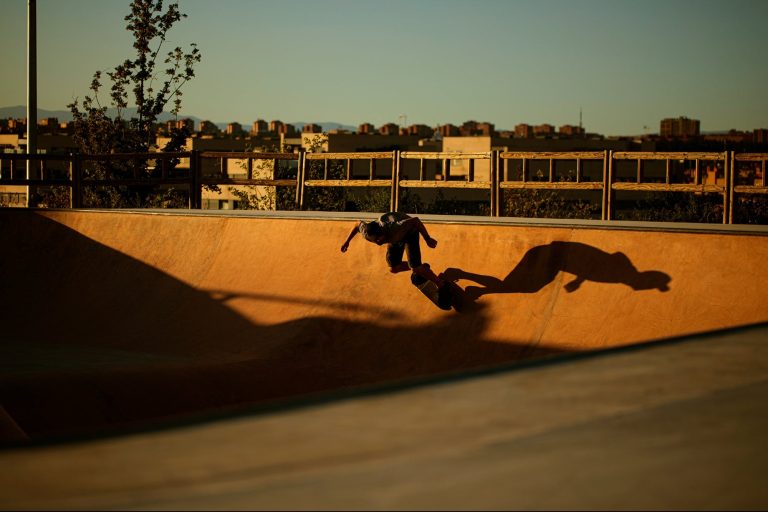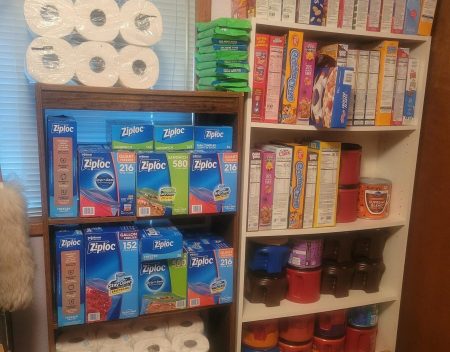Entrepreneur
Skateboarding found me early, and it’s never really let go.
My first kit was in the tiny English village where I grew up: a Newporter ash deck and a Cooper hockey helmet. With my best buddy back then, Jeremy Stanford, I built ramps in the street until his mum took us to London to watch the big kids do some proper skating.
I returned to skating as a university student in the 1980s. To a Suicidal Tendencies soundtrack, our gang hit hotspots like Southbank, where we marveled at the artistry of American legend Mark Gonzales.
Fast-forward to today, and I spend less time on a board and more time in the boardroom. Yet all those years in the skatepark continue to influence how I lead and my work as a retail strategist for the world’s most loved brands.
For starters, there’s the anatomy of a skateboarding trick, which mirrors chasing a business opportunity. First is the setup, where you scout the terrain before launch. Then your time in the air, when all the elements of the trick must flow together, just like team members closing in on a deal. Then comes the landing. You might stick it — or you could faceplant.
Whatever happens, you take something away from the experience. I call it “crash and learn.” Here are five lessons from that philosophy that have made me a better business leader.
Related: 6 Things You Gain By Embracing Failure
1. Failing is a fact of life, so learn from it
I rarely went beyond the lip of the halfpipe, and I got used to falling. Because a major wipeout hurt so much, I also learned how to fall if a trick went sideways. Sometimes that meant kicking the board away to avoid landing at a funny angle — the easiest way to break an ankle.
Skating gave me a slightly different take on the popular business mantra of “move fast and break things.” For any leader, failures are inevitable. But so is reflecting on what went wrong — and learning to do things differently next time.
For businesses that embrace its lessons, failing can be a strength. In a study of tech startups, those that committed to learning from failure had bigger scientific output, raised more money and innovated more.
2. Look for marginal gains
Ollie, kickflip, switch 360 — in skateboarding, everybody wants to nail a trick. It’s not that easy. You have to keep doing the same thing again and again, making tiny adjustments as you learn what works and what doesn’t. That iterative process can lead to mastery.
In business as well as sports, there’s a lot to be said for marginal gains, where a 1% improvement in several small areas can make a big overall difference. At my company, we use A/B testing for campaigns, trying out different versions of our messaging by tweaking the language, much like a skater tests foot placement. Essentially, we’re using a series of micro-failures to settle on the ideal message. Practice makes perfect.
Related: The F-Word: Why Failure is a Must-Have Key to Success
3. Balance fear with confidence
No matter how many takeoffs and landings you do as a skateboarder, the fear factor lingers. Each time you try a new trick, the stakes get higher. “Go big or go home,” a slogan I have mixed feelings about, means balancing fear with confidence.
It’s no different in business, where fear often gets the upper hand. In one survey, 85% of executives said that fear holds back innovation efforts in their organization.
For me, fear and confidence still battle it out whenever I do a big public speaking engagement. I’ve always felt good about the content of my speeches, but I get stage fright.
One of those times was a presentation I gave in Monaco, right after Paco Underhill, the grandfather of retail and shopper insight. I was petrified until Underhill started speaking and I realized he had a stutter. Seeing him talk with such confidence made me think, “Yeah, I can go out there and smash this.”
Related: This Founder Didn’t Want to Be the ‘Face’ of Her Brand. But She Pushed Through the Discomfort — and Now She’s a Household Name.
4. Choose collaboration over confrontation
Skateboarding is as much a collaboration as it is a solo sport.
While sitting atop the ramp waiting their turn, people egg you on, banging their boards in celebration if you pull off a new trick. They also freely share tips: “Maybe just put your foot a bit further up the board next time.”
The best creative teams model this approach. Somebody once told me there are two kinds of agency: those built on aggression and those built on love. I know which one I prefer. Ideally, the teams I lead trust and support each other and believe in what they’re doing together for newer team members who are learning, which includes having access to someone senior who can be their sounding board.
To help build a nurturing culture, here’s something I borrowed from Procter & Gamble. Get the greenest employee to speak first at a meeting and work your way up. Ironically, the junior folks often say smarter things than their superiors, who can just go, “I really like what you said.”
There’s also a business case for working as a team. Collaborative work environments lead to higher employee engagement, which can boost profitability by almost 25%.
Related: How Leaders Can Embrace Change and Keep Thriving Through It
5. Know when it’s time to bail
For skateboarders, knowing when to bail from an unsuccessful trick is an art form. As a leader, I try to bring the same agility.
In the creative industries, an idea often sounds fantastic on paper, but when you get to execution, you know it’s not going to work. Time to pull the plug before more time and money get wasted.
That nimbleness can benefit anyone in a senior leadership role. Once you reach a certain level, you’ve likely experienced getting fired or made redundant. I don’t fear those things anymore. And sometimes you realize you’re not in the right place, like when I quit on a former boss because we didn’t agree on how to run the business. Whether the decision to bail is yours or not, what really matters is having the confidence to start again.
In skateboarding and in business, nobody sets out to crash. But ultimately, you can’t control the uncontrollable. For a leader and their team, the most important thing is being unafraid of crashing — because if the organization is driven by fear, it’s screwed. When people fear failure, they start playing politics. Before you know it, they’ve thrown everyone else under the bus. This is a real problem, given that one-third of corporate managers lead with fear.
Even if a leader decides to take a more cautious approach, it’s better to work from a place of confidence. Either way, here’s to sticking the landing.
Read the full article here









